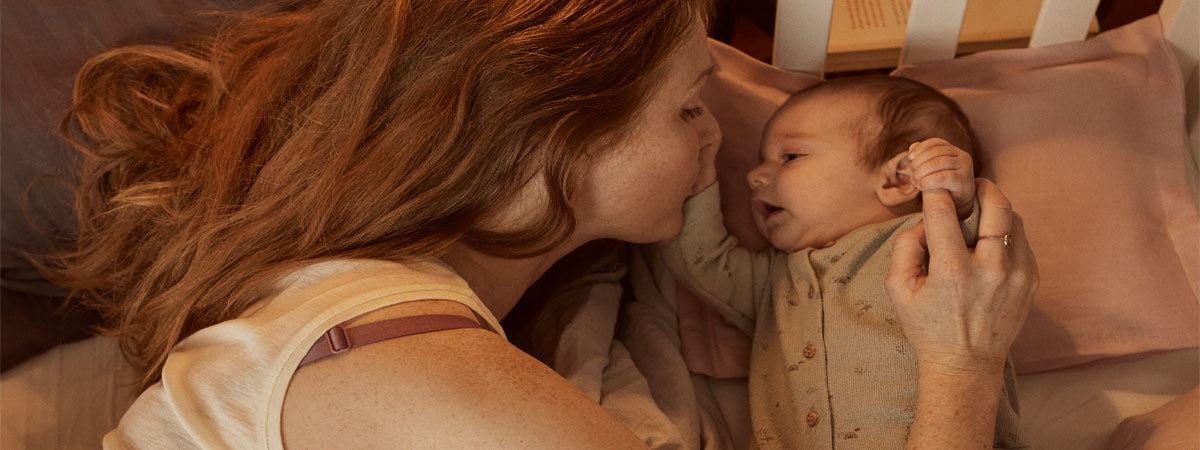Sudden infant death syndrome - how to reduce the risk

Sudden infant death syndrome (SIDS) is very rare. But if it does happen, it is truly earth-shattering. But although we don’t really know why it happens, there are actually things you can do that drastically reduce the risk.
Watching over a sleeping baby is an instinct that comes from deep within us as parents. We want to see that all is well with the little one, that they’re the proper temperature – and of course, that they’re breathing as they should be. Habitually checking on your child is a natural part of parenthood. But while it is often nice and peaceful to make sure your baby is sleeping, you can’t watch over them like a hawk the whole time or check on each and every breath. However, there is some important advice you should follow to reduce the risk of SIDS.
At what age could a baby get SIDS?
SIDS is most common when babies are under six months old, and it happens while the baby sleeps. But unfortunately, we don’t really know why it is that very rarely – only about one in 6,000 – a baby suddenly stops breathing. However, we do know what can drastically reduce the risk.
Seven tips for reducing the risk of SIDS
- Babies under six months should always sleep on their backs, which keeps their upper respiratory tract free. Several studies clearly show that the risk of SIDS is reduced if the baby sleeps on their back, so even if baby seems to prefer their side or tummy – which many do – it isn’t worth the risk. It may also be comforting to know that babies can actually turn their heads to the side if they need to vomit, so you don’t need to worry about that. If a baby is lying on your chest and you are awake, it is okay to let them sleep that way – you will be able to hear them breathe. If the baby turns over in their sleep, that usually means they’re big enough that the risk has passed – but you can still go ahead and turn them onto their back when they (and you) wake up when they get hungry.
- Avoid nicotine in all forms, both during pregnancy and once the baby arrives. The risk of SIDS is clearly much higher if the baby is exposed to smoking, snuff, nicotine patches or nicotine gum. Since nicotine is what poses the greatest risk here, rather than second-hand smoke (which is harmful for many other reasons, of course), the risk doesn’t just go away if you smoke on the balcony. The nicotine in snuff, gum and patches passes into breast milk if you’re breastfeeding.
- Make sure the baby always sleeps with their face free, and that the pillow or blanket never covers their face. And even if a crib full of soft toys is adorable, do not leave those toys there while the baby sleeps – it would be far too easy for the baby to grab one and cover their face.
- Have the baby sleep in their own bed. If you prefer to co-sleep, then use a baby nest. This way, the baby has their own space and is not at risk of winding up underneath you or your covers. Infants should also be able to move their little arms and legs freely.
- Check to make sure the baby isn’t wearing too much clothing, and that they’re the right temperature while sleeping. Touch their neck: if it’s too warm or sweaty, then remove some clothing.
- If the baby likes, you can let them have a pacifier while sleeping. Pacifiers have been shown to offer some protection against SIDS – though it is unclear why.
- Breastfeeding during the baby’s first months has been shown to offer some protective effects, with various theories as to why. It could be because babies who breastfeed have an easier time waking up and do so more often at night; it could also be that breastmilk itself offers some protection through its positive impact on the immune system.
Of these seven tips, the absolute most important ones to keep in mind are: 1) baby should sleep on their back during the first six months; 2) avoid all forms of nicotine; and 3) make sure baby’s face is free from blankets, pillows and anything else while sleeping.
Tummy time is stimulating for babies while awake
When they’re awake, you can place your baby on their tummy for a little while to train the musculature of the neck and back. Different positions also help the baby’s still slightly malleable head to be less flat on the side or at the back. But of course, the baby can’t be left alone this way and often needs a little encouragement through this tough exercise. Above all, they need someone to watch for when they get fatigued. Early on, it won’t be long before the baby’s face winds up on the rug – and you need to be there to help. After a few months, most babies think watching the world around them from their tummies is loads of fun – and at that point, the attempt to roll over will follow quite naturally.
Please note that all information above is based on Swedish recommendations.
